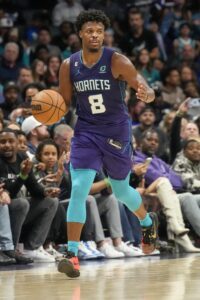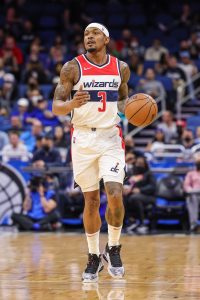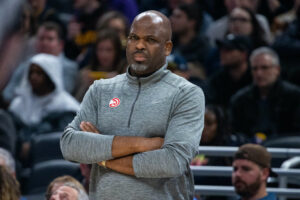At the start of the 2022/23 campaign, we looked ahead and identified several dates and deadlines to watch on the NBA calendar this season. While that list covered the general highlights, it’s worth taking a closer look at some of those key dates to keep an eye out for in January, which should be a busy month.
Let’s dive in…
Non-guaranteed contracts become guaranteed
January 10 is the date that all non-guaranteed NBA contracts for 2022/23 will officially become guaranteed, but January 7 is really the day to watch.
If a team wants to avoid having a salary become guaranteed, the player must clear waivers before January 10, which means he needs to be cut by January 7 — at the latest.
Many players without fully guaranteed salaries are in no danger of being waived by next Saturday, but some teams will take the opportunity to save a little money and open up a roster spot.
Teams can begin signing players to 10-day contracts
As of January 5, clubs will be able to sign players to standard 10-day contracts, which count against team salary for cap and tax purposes and require an opening on the 15-man roster to complete.
Rebuilding teams generally use 10-day contracts to audition G League standouts or other prospects to see if they might be worth investing in beyond this season. Contending clubs are more inclined to use 10-day contracts to bring in veterans who can step in right away to address a need or provide depth at a position hit hard by injuries.
We extensively outlined the details of 10-day contracts and explained how they work in our glossary entry on the subject.
More players become trade-eligible
A significant portion of the NBA’s offseason signees became eligible to be traded on December 15, but there are still many players who can’t be dealt. By the end of January, that list of players ineligible to be traded will shrink further, since there are 28 players currently on track to have those restrictions lift between now and January 31.
January 15 is the key date, with 21 players becoming trade-eligible as of that Sunday. That group includes some players who almost certainly aren’t going anywhere, but a handful of players on the list could be involved in trade rumors in 2023, including some who have already been popular subjects of speculation. Bradley Beal, Zach LaVine, and Deandre Ayton are a few of the headliners.
A number of other offseason signees have unique trade-eligible dates in January, since they signed as free agents in October or inked a veteran extension in July. That list features names both big (like Damian Lillard) and small (such as Isaiah Joe).
Other odds and ends
There are a few other dates in January that are worth mentioning, despite the fact that they’ll likely come and go without much fanfare.
On January 10, mid-level and room exceptions – along with other cap exceptions like the bi-annual exception – will start to prorate for the year, meaning a team with its full mid-level exception available would no longer be able to offer the full $10.49MM amount to a free agent. Exceptions will decline in value by 1/174th per day, starting on January 10.
January 15 is the last day that teams can apply for a disabled player exception to replace an injured player who is deemed unlikely to return this season. A disabled player exception can give a club extra cap flexibility, though that team may still have to open up a roster spot to add a player using its DPE. Only the Celtics and Thunder have received DPEs so far this season, and the Thunder already used theirs.
On January 20, all players on two-way contracts will have their minimum salaries for the season become fully guaranteed.
 Charania’s report comes just weeks after
Charania’s report comes just weeks after